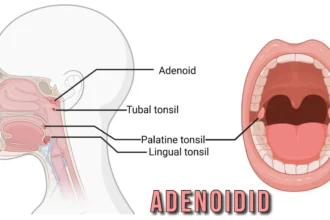Periorbital wrinkles are among the earliest visible signs of facial aging. While many people consider them to be the result of superficial skin aging, in reality, the underlying orbicularis oculi muscle is a primary driver of wrinkle development. In this article, we will explore in detail why periorbital wrinkles originate from the orbicularis oculi muscle and understand the mechanisms and causes behind their formation.
Structure and Function of the Orbicularis Oculi Muscle
The orbicularis oculi is a circular muscle that encircles the eye, responsible for movements such as blinking and forceful eyelid closure. Shaped like a pair of round sunglasses around the eyes, this muscle is anatomically divided into two major parts: the orbital part and the palpebral part.
The orbital part forms the outermost circular layer surrounding the eye, while the palpebral part, located within the eyelid, is further subdivided into the preseptal and pretarsal portions. This complex anatomy plays a vital role in enabling a wide range of eye movements and facial expressions.
The main functions of the orbicularis oculi muscle include:
- Basic movements of eyelid opening and closure
- Forceful eyelid closure
- Providing structural support to the lower eyelid
- Protection of the eye from external stimuli (e.g., soap, bright light)
- Contribution to facial expressions such as smiling and winking
From unconscious blinking to deliberate facial expressions, the orbicularis oculi muscle is in constant use. This repetitive activity over time is a major factor in the formation of wrinkles around the eyes.
Mechanism of Wrinkle Formation Originating from the Orbicularis Oculi
Periorbital wrinkles stem from the repeated contraction and relaxation of the orbicularis oculi, as well as age-related changes in both the muscle and surrounding tissues.
- Repetitive Muscle Contraction
Every time we smile, squint, or narrow our eyes against sunlight, the orbicularis oculi contracts. These contractions cause the overlying skin to fold. With repeated folding in the same regions, permanent wrinkles gradually form. The most representative example is the formation of lateral canthal lines, commonly known as “crow’s feet,” which result from repeated contraction of this muscle.
In younger individuals, these folds are transient due to good skin elasticity and active collagen production. However, as we age, the skin’s ability to rebound diminishes, and these lines become permanent.
- Age-Related Changes in the Orbicularis Oculi
As we age, the elasticity and strength of the orbicularis oculi diminish, leading to several functional and structural changes:
- Decreased muscle tone: Reduced tension in the muscle weakens its ability to support surrounding tissues.
- Muscle sagging: As the muscle loses its tone, the overlying skin and fat also begin to sag.
- Eye shape alteration: Sagging typically begins from the inner and outer corners of the eye, changing the eye shape to a more triangular form.
Because the orbicularis oculi plays a key role in supporting the surrounding structures, its weakening can destabilize the entire periorbital region. These changes may lead to not only wrinkles but also functional impairments such as upper eyelid ptosis, visual field obstruction, and excessive tearing.
- Interaction Between Skin and Orbicularis Oculi
The skin around the eyes is significantly thinner than that of other facial regions—about one-third the thickness—and has fewer sebaceous glands, making it prone to dryness. As a result, the movement of the orbicularis oculi has a more direct impact on the skin surface.
When the skin is dry and thin, wrinkle formation due to repeated muscle movement becomes more pronounced. Furthermore, the reduction in structural proteins like collagen and elastin due to aging prolongs and intensifies these skin deformations caused by muscle activity.
Factors Contributing to Periorbital Wrinkle Formation
In addition to orbicularis oculi activity, a variety of intrinsic and extrinsic factors accelerate wrinkle formation around the eyes.
Intrinsic Factors:
- Hormonal Changes:In women, estrogen levels begin to decline in the late 30s and drop rapidly around the age of 50. Estrogen stimulates the production of hyaluronic acid, collagen, and elastin—key components for skin elasticity. Hormonal depletion leads to structural deterioration and wrinkle development.
- Slower Skin Turnover:The natural regeneration cycle of the skin slows with age, making the skin texture uneven and more prone to fine lines.
- Ocular Fatigue:Prolonged use of digital devices such as computers and smartphones leads to tension in the orbicularis oculi and other periocular muscles, impairing blood circulation. Poor circulation deprives the skin of essential nutrients and oxygen, contributing to wrinkle formation.
Extrinsic Factors:
- Dryness:The periorbital area is structurally susceptible to dryness. Skin lacking moisture and lipids loses elasticity, is prone to fine lines, and becomes more vulnerable to environmental damage.
- UV Exposure:Ultraviolet radiation destroys collagen and elastin while generating reactive oxygen species, accelerating skin aging. The thin periorbital skin is particularly vulnerable to UV-induced damage.
- Friction and Irritation:Repeated friction or irritation in the delicate eye area promotes wrinkle formation. Habits such as rubbing the eyes during cleansing or pulling the skin while applying eyeliner can exacerbate this.
- Lifestyle Habits:
- Sleep Deprivation:Nighttime is when collagen synthesis and growth hormone secretion peak, facilitating tissue repair. Insufficient sleep hinders these processes and impairs skin regeneration.
- Cold Sensitivity, Stress, Smoking:These factors constrict blood vessels and reduce blood flow. Poor circulation hampers nutrient delivery, leading to dry, fine lines and deeper wrinkles from reduced skin elasticity.
Types of Periorbital Wrinkles and Their Relationship with the Orbicularis Oculi
Periorbital wrinkles can be classified based on form and etiology, each with varying degrees of association with the orbicularis oculi muscle.
- Fine Lines (Superficial Wrinkles):
Typically caused by skin dryness and appear as shallow lines on the skin surface. While they are more related to the skin’s moisture balance and texture, repetitive movement of the orbicularis oculi can accentuate their appearance. - Expression Lines (Dynamic Wrinkles):
These are formed due to repetitive contraction of the orbicularis oculi. Lateral canthal lines or “crow’s feet” are the classic example. Initially, they are only visible during expressions (dynamic wrinkles), but with time, they persist even at rest (static wrinkles). - Sagging Wrinkles (Static Wrinkles):
Resulting from a loss of muscle tone and tissue support, these wrinkles form due to sagging skin and fat. This category includes upper eyelid drooping (blepharoptosis) and lower eyelid wrinkling—both strongly associated with structural changes in the orbicularis oculi.
Management of the Orbicularis Oculi and Prevention of Periorbital Wrinkles
Given that the orbicularis oculi is a root cause of periorbital wrinkles, maintaining its function and supporting surrounding structures is essential for prevention and improvement.
Daily Preventive Strategies:
- Adequate Hydration:Use dedicated eye creams to maintain moisture in the periorbital skin.
- UV Protection:Apply sunscreen carefully around the eyes and wear sunglasses to minimize UV exposure.
- Gentle Cleansing:Avoid rubbing or pulling the delicate skin around the eyes during makeup removal or face washing.
- Ocular Health Maintenance:Take regular breaks from digital screens to reduce eye strain.
- Sufficient Sleep:Quality sleep is critical for skin regeneration and repair.
Professional Interventions:
- Botulinum Toxin Injections:Temporarily inhibit excessive orbicularis oculi contraction to smooth expression lines, especially effective for lateral canthal lines.
- Dermal Filler Injections:Use of hyaluronic acid-based fillers to restore volume and fill deeper wrinkles.
- Upper Blepharoplasty:A surgical procedure to correct upper eyelid drooping. It is essential to address not only excess skin but also underlying orbicularis oculi laxity by tightening and anchoring the muscle.
- Laser and Radiofrequency Therapy:Stimulate collagen production in the dermis to improve skin elasticity and firmness.
Conclusion
Periorbital wrinkles are not merely superficial skin concerns—they are deeply rooted in structural and functional changes of the orbicularis oculi muscle. Repetitive muscle contractions, age-related loss of muscle elasticity, and various internal and external influences all contribute to wrinkle formation around the eyes.
To manage periorbital wrinkles effectively, it is essential to adopt a comprehensive approach that addresses both the skin and the underlying muscle. From daily skincare practices to advanced professional treatments, selecting the appropriate strategy based on individual needs and conditions is key.
By understanding the orbicularis oculi as the origin of periorbital wrinkle formation, we can implement more effective eye care solutions and maintain a bright, youthful appearance over time.
Skin booster treatments are one of the most effective methods for managing periorbital wrinkles. By delivering hydration and nutrients deep into the skin, they enhance skin elasticity and moisture around the orbicularis oculi, providing excellent results, especially for early-stage fine lines and dryness-induced wrinkles.

















